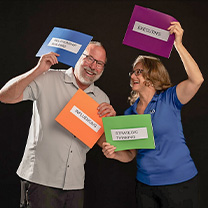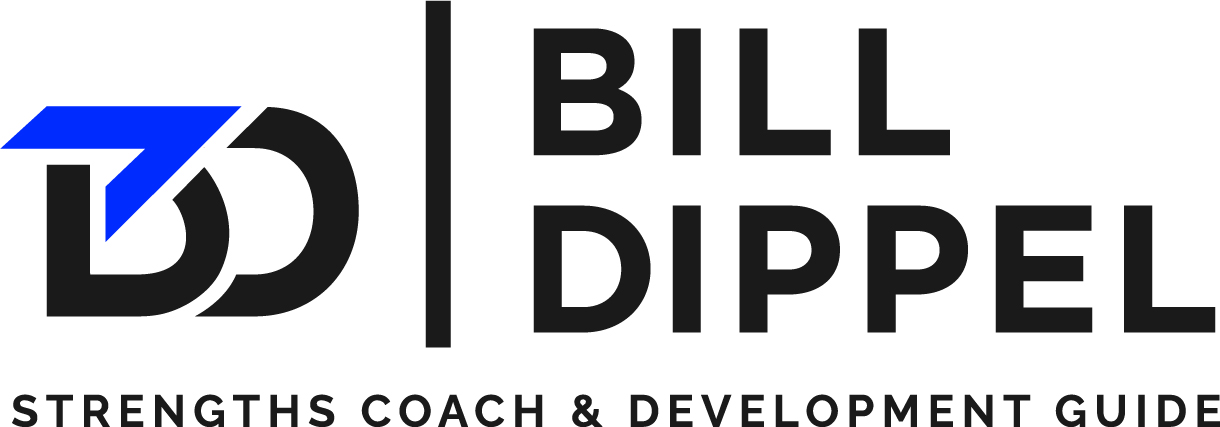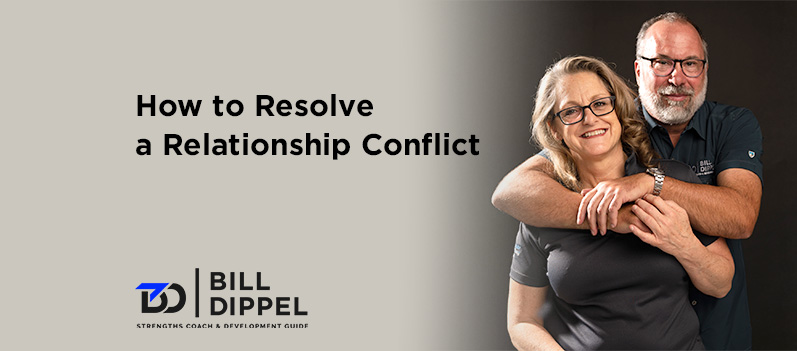Learn How to Resolve Relationship Conflicts by Playing to Your Strengths
Early in our marriage, my wife Renea and I sometimes had trouble finding a way to resolve a relationship conflict, like many couples, before we understood our strengths.
Before we identified and understood our natural talents and abilities, it was easy to view each other’s frustrating or seemingly inexplicable actions or behaviors as, well, deliberately annoying. Then, we both completed our CliftonStrengths assessments and had an epiphany: We were each playing to our strengths. Now that Renea and I have been married for a long time and even work together as Gallup Certified CliftonStrengths Coaches, we’ve learned to resolve relationship conflicts with more understanding and compassion for each other’s perspectives.
Even though our work primarily focuses on helping people understand their strengths to unlock their full potential and reach maximum performance, those natural abilities and talents are just as valuable outside the office. Leaning into your strengths at home can have a ripple effect that makes other parts of your life more enjoyable and ultimately makes you more productive at the office. Understanding your natural talents and abilities outside of work directly affects interpersonal relationships and can help you create a common language with friends, family, and your partner.
“Once we understood what each other wanted and how it played to our strengths, we could move forward with renewed empathy and resolve this relationship conflict.”
 At the Grocery Store: Conflict on Aisle One!
At the Grocery Store: Conflict on Aisle One!
Before CliftonStrengths, Renea and I frequently went to the grocery store together as part of our weekend errands. Invariably, I would run into someone I knew—a neighbor, a client, a newfound friend—and strike up a conversation. Renea would wait for a while but eventually press on, collect the groceries, check out, then come back to find me chatting with the same person—or maybe someone new.
We both found each other’s behavior annoying. I viewed hers as dismissive and thought she didn’t care about building relationships with friends and neighbors. She saw me not valuing her time. This would cause some big fights for the rest of the day—a day that Renea had taken time to plan and strategize.
But before you take sides, let’s break this down.
My top CliftonStrengths are Individualization, Developer, Activator, Woo, and Restorative. I love building relationships with people, learning about them, empathizing with them, helping them succeed, and living in the moment. Renea’s top strengths are Learner, Input, Maximizer, Responsibility, and Activator. She’s a strategic thinker who loves learning, maximizing time and output, making actionable plans, and visualizing the future. We couldn’t be any different. And you may not be surprised to hear that each other’s strengths are at the bottom of our lists of 34.
Our experience at the grocery store perfectly illustrates our differences. When we arrived at the grocery store, Renea had set a plan for the day with a series of errands. She had plotted a mental map through the store and wanted to check the task off the list and move on to the next. Then, all that went out the window because I saw someone and wanted to connect, develop a relationship, and catch up.
How We Used Our Strengths to Resolve This Relationship Conflict
Once we understood what each other wanted and how it played to our strengths, we could move forward with renewed empathy and resolve this relationship conflict.
I always want to stop and talk to as many people as possible, whether at the grocery store or an event. Renea feels fulfilled when she’s maximizing her efficiency and focusing on one person or task.
By evolving our understanding and adapting, we developed ways to cue each other in social situations. We now create a secret word or phrase before an event that tells the other person it’s time to eject. We check in a few hours into an event to give each other an opportunity to stay or go. If Renea’s ready to leave and I’m not, we don’t resent each other for separating midway through the event.
Our new strategy has also helped me manage my time and energy better. My blind spot, which all CliftonStrengths assessments will list, is that I can get lost in those moments with other people. Because I feel fueled by conversation, I often push myself to emotional exhaustion at events. These check-ins give me time to pause to check in with myself—especially if the day is going to be long and more meetings are yet to come.
The takeaway: Our check-ins at social situations allow us to each play to our strengths by giving Renea a concrete strategy to make the most of her time and allowing me the freedom to be in the now. This also translates to how we operate our business. While Renea’s strengths help us plan to keep us on target, I can use my strengths to capture new clients, build stronger relationships with existing ones, or see opportunities for more connections.
 Your Strengths Make You, You
Your Strengths Make You, You
It’s easy to want everyone to be the same—it increases agreeability, and you can recognize similar motivations and patterns. But it’s not really what you want in a relationship or your organization. The CliftonStrengths assessment celebrates our differences and uniqueness. “The combinations of talents are so unique that the chance that two people share the same top five CliftonStrengths themes in the same order is an astonishing one in 33 million,” according to Gallup.
It’s common to envy each other’s strengths because they appear novel from the other side. But this feeling can also teach us about ourselves. When Renea and I first met, she loved my WOO (winning others over) strength and wanted to feel that same excitement when interacting with new people. She tried to keep up at events and parties, but it was exhausting for her and didn’t feel natural.
The takeaway: The ultimate strength in a relationship is learning how your differences can complement one another. Not only is it OK to play to your strengths, but it’s also encouraged, and that’s why we spend so much time helping people find them.
More importantly, our differences make us stronger. Can you imagine if Renea and I were both WOO personalities? We’d never get any groceries and would still be there today! Without Renea’s strategic mind, planning, and deep knowledge, I could spend all my days jumping from person to person, wearing myself out. Without my WOO, Renea could make the best plans but would shy away from building ongoing relationships with clients that require a lot of time and empathy. Together, we make a strong team.
Your top 10 themes are like your glasses—you wear them all the time. Your middle themes are like sunglasses, you wear them occasionally when it’s sunny out driving or walking, and the bottom themes are like your party glasses. If you wear them all the time, people will be concerned and might have an intervention.
Want to learn more about your top 10 strengths and how to use them to resolve a relationship conflict? Here are three easy steps to do just that:
- Schedule A Call. Set up a complimentary 15-minute call. We’ll discuss your needs/goals and how I can help you have conversations that count.
- Get A Plan. I’ll make custom recommendations based on your needs or the needs of your team and present a plan.
- Leverage Your Strengths. Apply your natural talents and abilities to become more effective and get a fresh lease on life.


Recent Comments